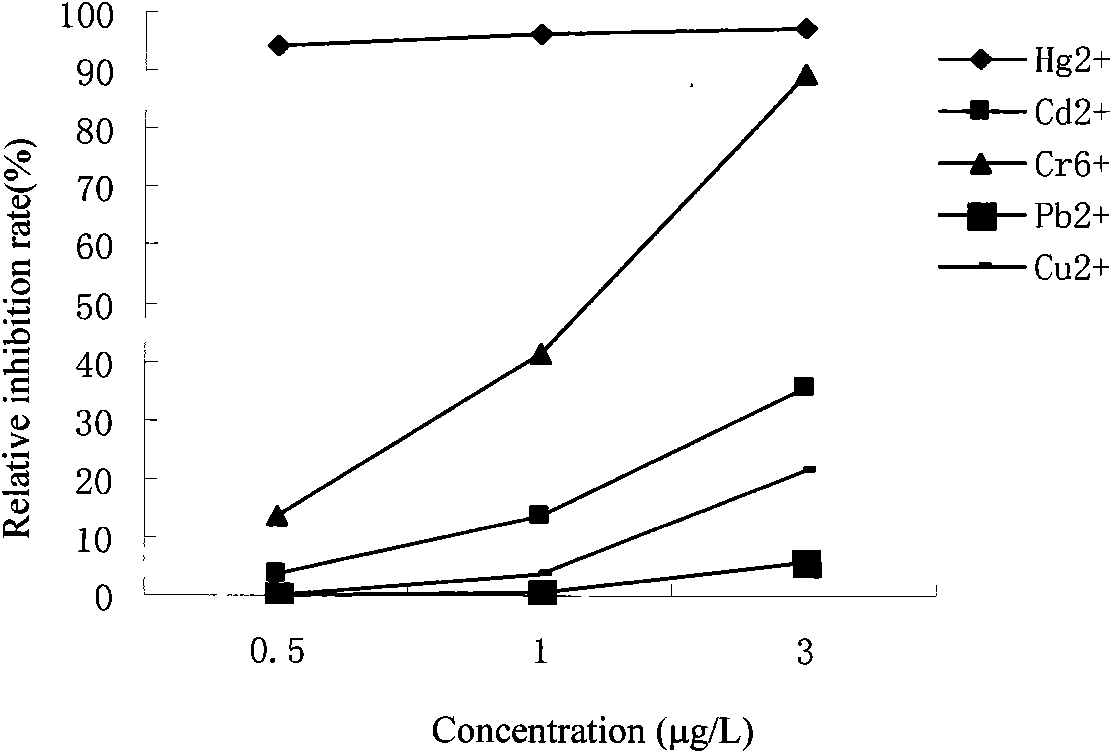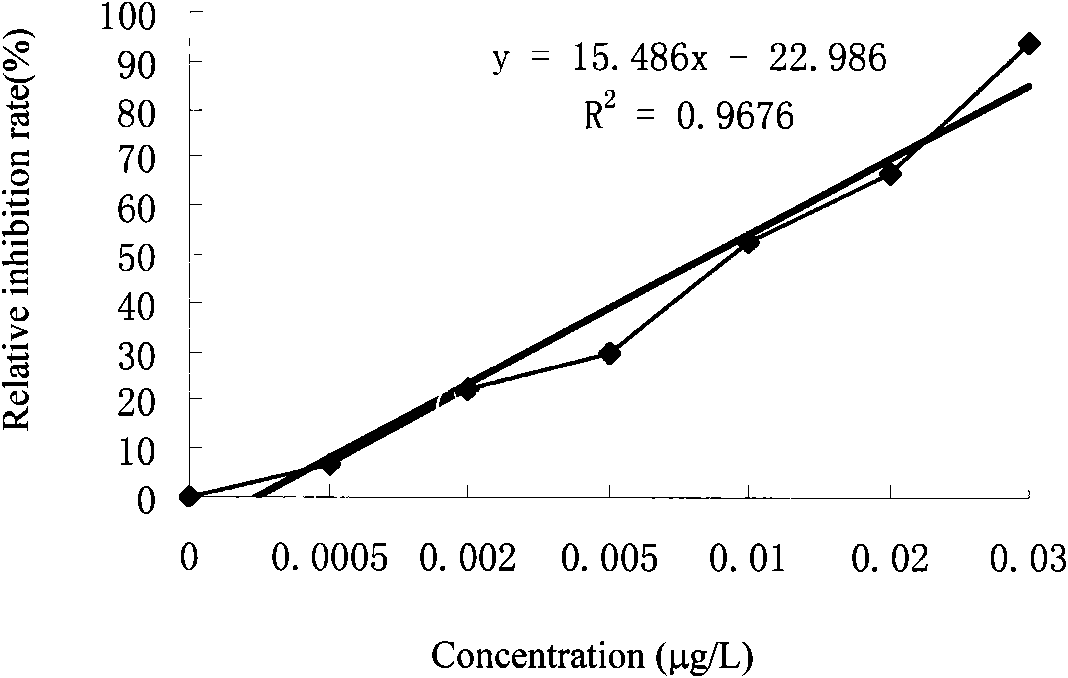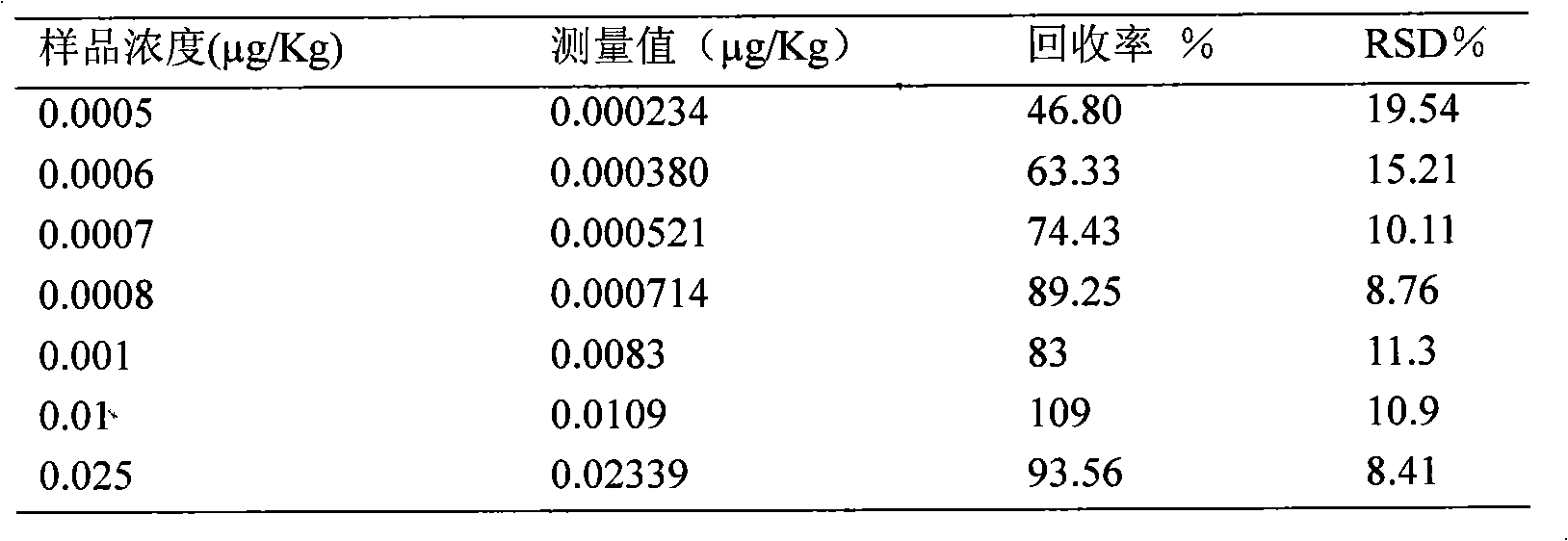Quantitative detection of heavy metal mercury by using luciferase and FMN:NADH oxido-reductase
A fluorescent light and reductase technology, applied in the field of mercury detection, achieves the effects of high sensitivity, high luminescence intensity, and simple and feasible substrate ratio
- Summary
- Abstract
- Description
- Claims
- Application Information
AI Technical Summary
Problems solved by technology
Method used
Image
Examples
Embodiment 1
[0020] Embodiment 1 enzyme liquid preparation
[0021] Collect 20mL of the cell suspension, centrifuge at 4°C (5000rpm, 5min), discard the supernatant, add a certain amount of PBS (5mL), mix with a magnetic oscillator, and sonicate on ice. The sonication time for each sample is 15s, and each interval is 30s. , Smash 15 times, power 300W. Extract to obtain crude enzyme liquid.
Embodiment 2
[0022] Embodiment 2 Enzyme system enzyme activity assay
[0023] To 1mL crude enzyme solution, quickly add substrate 12 alkanal 100μL (27mM), FMN-Na 53μL (10mM), Na 2 S 2 o 4 100μL (34mM), NADH 100μL (0.14mM), for enzyme activity determination.
[0024] The luminescence detection is carried out in a weak luminescence instrument, and the detection conditions are: after adding the solution or reagent, the timing tracking measurement is carried out immediately, and the continuous measurement interval is 1s.
Embodiment 3
[0025] Example 3 Enzyme system is sensitive to heavy metal screening
[0026] Add 500 μL of heavy metal solution to 1 mL of enzyme solution, place it at 4°C for 15 minutes, and quickly add 100 μL (27 mM) of substrate 12 alkanal, 53 μL (10 mM) of FMN-Na, Na 2 S 2 o 4 100μL (34mM), NADH 100μL (0.14mM), for enzyme activity determination. Screen enzyme sensitive heavy metals.
[0027] Heavy metal ions can combine with bacterial proteins to denature them or combine with sulfhydryl groups of certain proteins to inactivate enzymes [13] , the effects of different concentrations of heavy metal ions on the enzyme activity are shown in Figure 5, and the difference is very large. Enzyme to Hg 2+ Most sensitive, followed by Cr 6+ 、Cd 2+ , when the concentration is 0.5μg / L, Hg 2+ The inhibition rate of enzyme activity is over 94%, Cr 6+ The inhibition rate of enzyme activity is 13.69%, Cd 2+ was 3.51%. Also select the Hg that has the greatest influence on the enzyme activity 2+...
PUM
 Login to View More
Login to View More Abstract
Description
Claims
Application Information
 Login to View More
Login to View More - R&D
- Intellectual Property
- Life Sciences
- Materials
- Tech Scout
- Unparalleled Data Quality
- Higher Quality Content
- 60% Fewer Hallucinations
Browse by: Latest US Patents, China's latest patents, Technical Efficacy Thesaurus, Application Domain, Technology Topic, Popular Technical Reports.
© 2025 PatSnap. All rights reserved.Legal|Privacy policy|Modern Slavery Act Transparency Statement|Sitemap|About US| Contact US: help@patsnap.com



